Flora
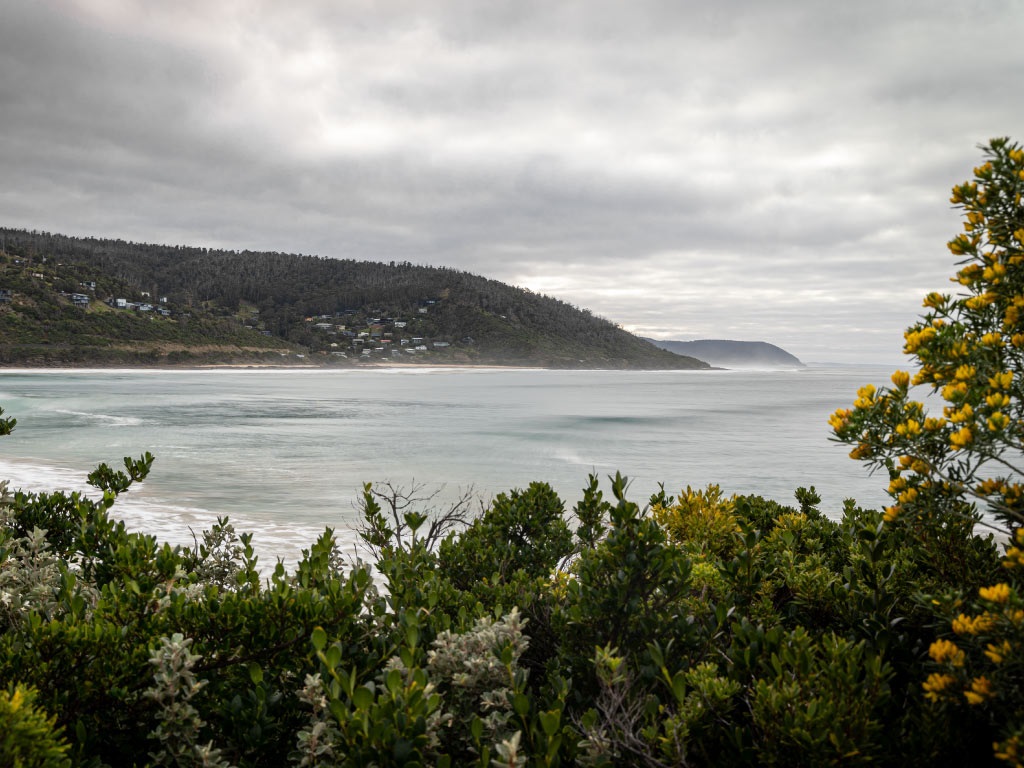
The protection of the Great Ocean Road coast and parks flora is one of our Conservation Team’s primary responsibilities. This includes protecting:
Bioregions/Ecological Vegetation Classes
Bioregions are a landscape-scale approach to classifying the environment using different attributes such as climate, geology, soils and vegetation.
The Great Ocean Road Coast and Parks Authority managed coastal Crown land extends across two bioregions – Otway Plain and Otway Ranges.
Ecological Vegetation Classes (EVC) are a standard unit developed by the Department of Energy, Environment and Climate Action (DEECA) for classifying vegetation types in Victoria.
Some examples EVC along our coast include Coastal Headland Scrub (EVC 161), Coastal Alkaline Scrub (EVC 858), Coastal Dune Scrub (EVC 160), Grassy Woodland (EVC 175) and Heathy Woodland (EVC 48).
The Conservation team use bioregions and EVC of the site to inform the planting design and species selection to ensure the selected plants are suitable for the area. Further detail about this can be found in the Coastal Vegetation Strategy Part 1 - Overview.
Coastal Moonah Woodlands
Coastal Moonah Woodlands provide vital food and shelter for native wildlife and are constantly threatened by weed invasion, informal access and land clearing for development.
Coastal Moonah Woodland community is comprised of numerous species, however it is dominated by Moonah trees (Melaleuca lanceolata subsp. lanceolata) and occurs within the Coast Alkaline Scrub Ecological Vegetation Class. Since European settlement, a vast majority of these woodlands have been cleared, with less than 10% of the original plant community remaining in Victoria.
Coastal Moonah Woodland is listed as a threatened community under the Flora Fauna Guarantee Act 1988.
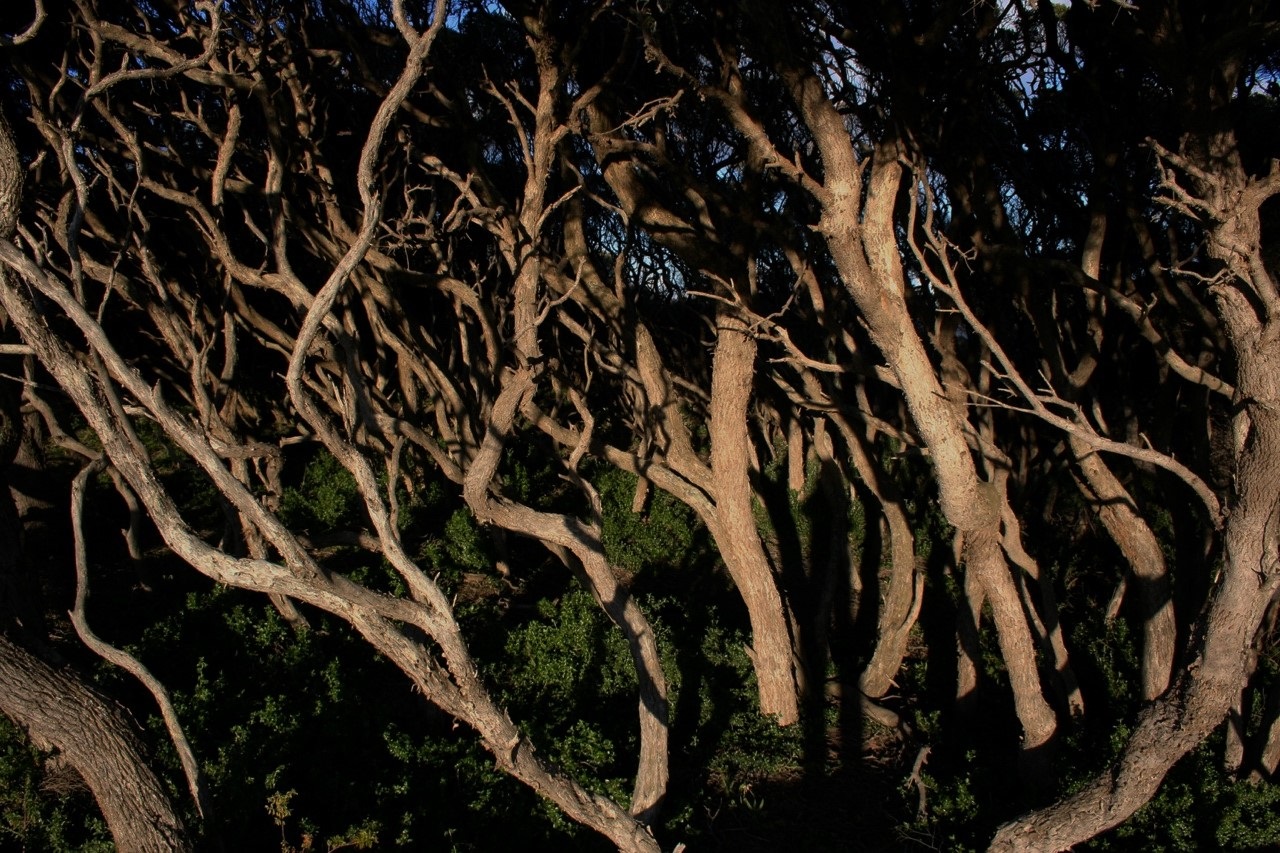
Image: Surf Coast Nature Search
Anglesea Heathlands
One of the most biodiverse ecosystems in Victoria, the Anglesea Heathlands provide a sense of remoteness and amazement to visitors with their spectacular diversity and beauty. A quarter of Victoria’s plant species can be found in the area, with more than 80 unique types of orchids.
In Spring, the area erupts in a sea of colours, making it the ideal time to experience this breathtaking site with one of ANGAIR’s local wildflower walks.
Eucalypt Forests
Our team manages a wide variety of different environments, including the tall eucalypt forests at Queens Park in Lorne.
The unique character of this landscape includes dense forests, steep slopes and spectacular sea views. It offers one of Lorne’s most accessible and rewarding bushwalking precincts, with the cultural and social assets of the eucalypt forest attracting an array of native wildlife to the area.
Examples of eucalypt species that exist in the area include:
Bellarine Yellow Gum
Bellarine Yellow Gum (Eucalyptus leucoxylon subsp. bellarinensis) is a small mallee-like tree that grows to approx. 15m in height. The bark of the lower trunk is brown/grey-brown in appearance whereas the upper trunk appears white/grey. It is the only local eucalyptus to flower in winter making it a vital food source for nectar-feeding birds and insects. The flowers are pale yellow to white and flowering occurs from April to May. This eucalypt occurs in dry coastal habitats and is influenced by environmental attributes such as coastal winds (which is why it loves our coast!). Bellarine Yellow Gum occurs in the Grassy Woodland Ecological Vegetation Class (EVC) that currently occupies 2% of its former range.
The Bellarine Yellow Gum has been listed as ‘Threatened’ under the Flora and Fauna Guarantee Flora and Fauna Guarantee Act Threatened List
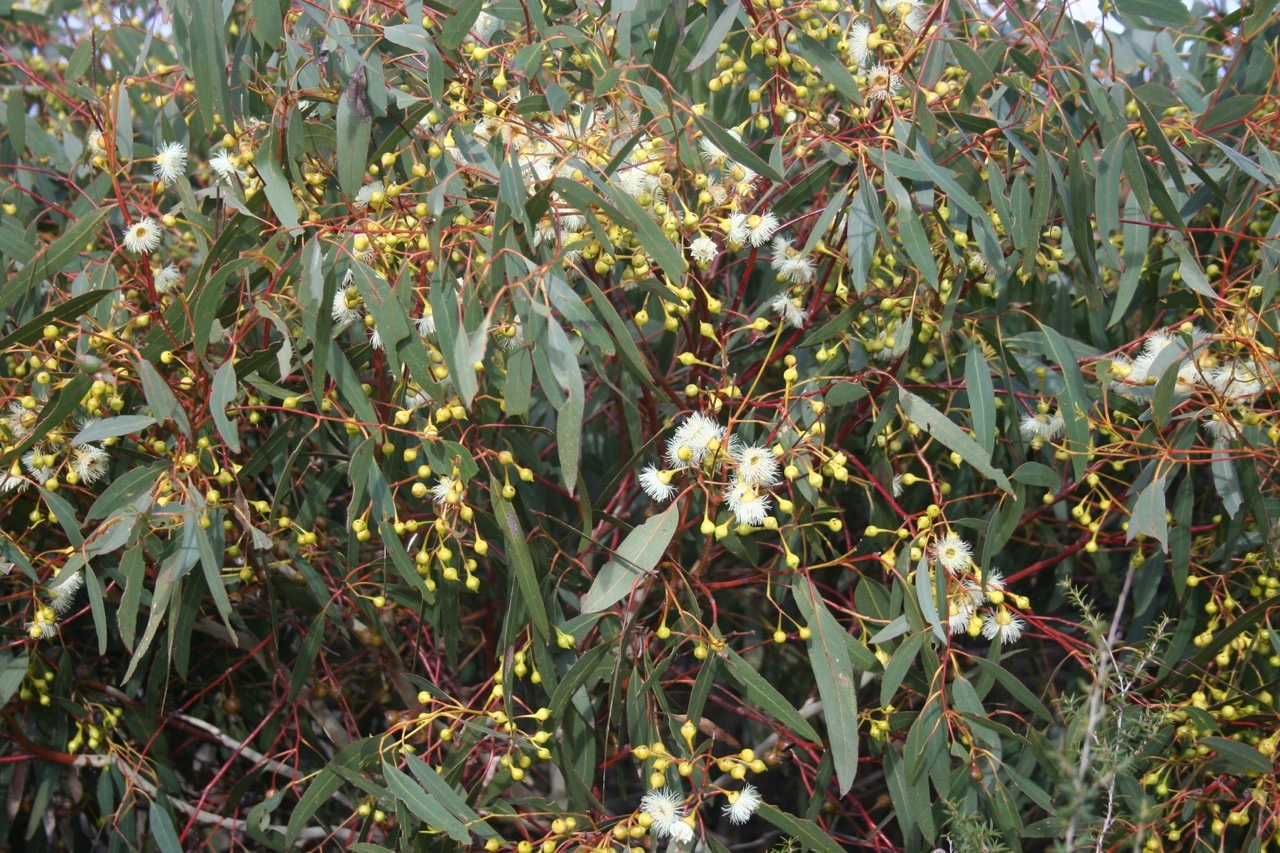
Image: Surf Coast Nature Search
Anglesea Grey Gum
Anglesea Grey Gum (Eucalyptus litoralis), is endemic to Victoria and also listed as a vulnerable species. The Anglesea Grey Gum occurs on sandstone hills near the sea from Anglesea through to Aireys Inlet and Lorne. These trees prefer locations where there is low-nutrient, sandy soils and the understory is comprised of small-leafed shrubs, coarse grasses, sedges and herbs. The Anglesea Grey Gum grows to approx. 18m tall with rough grey-brown bark over much of the trunk and glossy, green leaves.
Fun fact: The Anglesea Grey Gum used to be considered the same species as Mountain Grey-Gum (Eucalyptus cypellocarpa) however taxonomic revision in the early 2000s revised its status to now be a separate species.
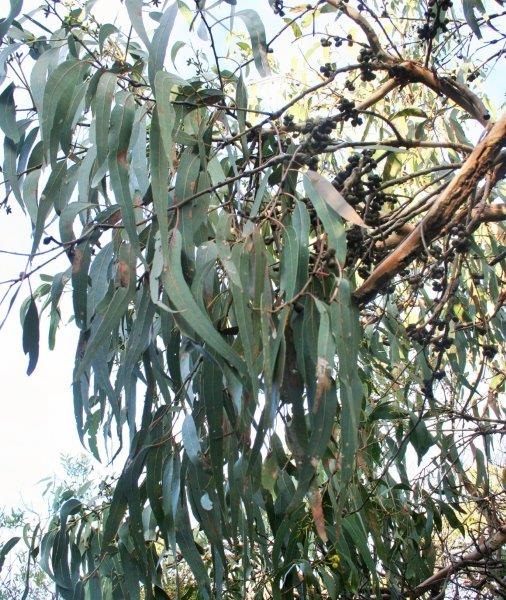
Image: Surf Coast Nature Search
While walking through the forest see if you can spot the different eucalypts. You might even stumble upon a threatened owl species or some iconic Australian fauna like echidnas, koalas and kangaroos.
Native Grasses
Indigenous grasses grow in abundance along the Great Ocean Road, and sadly, these important ecosystems are some of Australia’s most damaged. Volunteer groups along the coast work tirelessly to restore native grassland ecology throughout the region, with a focus on protecting local species including Common Wallaby-grass, Coast Tussock-grass and Kangaroo Grass.
The Surf Coast Nature Search database Surf Coast Nature Search (created by our local Jan Juc Coast Action group) has a full list of the indigenous Surf Coast grasses and weeds for reference. These indigenous grasses have adapted to the harsh Australian climate and can grow in areas that have been subjected to erosion or shallow soil depths.
Common Wallaby-grass
Common Wallaby-grass (Rytidosperma caespitosum) is a perennial tussock-forming grass that grows during the warmer months of the year before becoming dormant in winter. It is more commonly seen in the native grassland area surrounded by other wallaby grasses and other native grass species. Common Wallaby-grass leaves have a blue-ish tone and are commonly sparsely hairy with bleached, fluffy seedheads that appear in early summer. The seeds provide food source to many birds and were a common Indigenous use to make flour for damper.
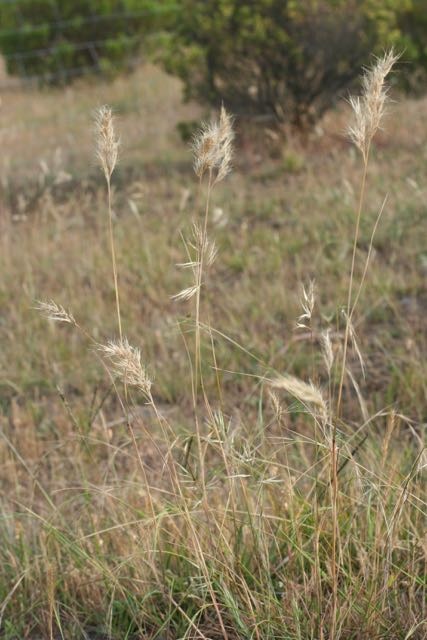
Image: Surf Coast Nature Search
Coast Tussock-grass
Coast Tussock-grass (Poa poiformis var. poiformis) is a low growing tufted grass and prefers locations where it is exposed to regular moist coastal winds. This is why it is mostly found on the cliffs of Jan Juc as a front-line coastal species. Coast Tussock-grass is used extensively in revegetation work along the coast as it is fast growing and hardy.
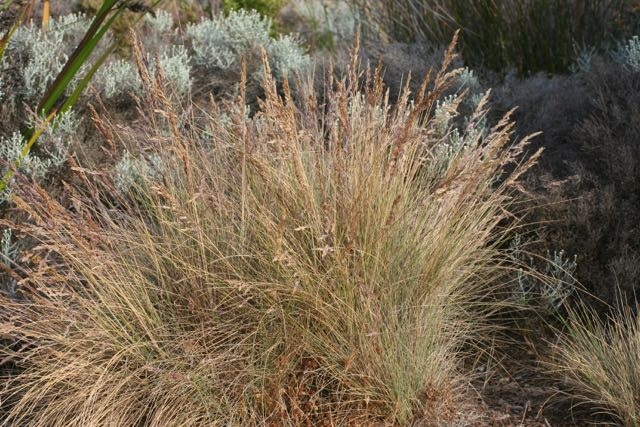
Image: Surf Coast Nature Search
Kangaroo Grass
Kangaroo Grass (Themeda triandra) is a perennial tussock grass that can grow up to a metre in height when flowering. Leaves are ‘floppy’ in appearance and are bright green when growing and become red as they become dormant or if there has been low rainfall. Dormancy in this species occurs as the weather becomes colder through Autumn and into Winter. Again, similar to the Common Wallaby-grass, the seeds were a common Indigenous use to make flour.
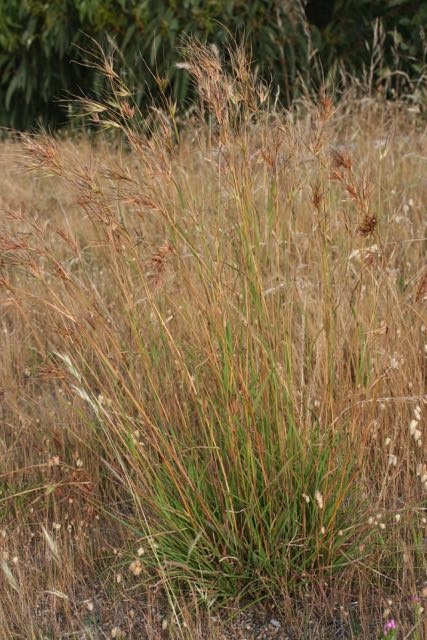
Image: Surf Coast Nature Search
Management of weed species
The Authority’s Conservation team manages a vast and dynamic stretch of coastline from Pt Impossible to Marengo. The management of varied weed species is one focus of the team who manage their workplan based on priorities and objectives laid out in the Coastal Vegetation Strategy (CVS).
Coast-Tea-tree (Leptospermum laevigatum) is a grey-green shrub to small tree that can range from 2-8m tall depending on location and conditions. The bark is flaky and consists of broad green leaves with white flowers. Coast Tea-tree is common on coastal sands from Port Phillip and eastwards, however as it has a good tolerance of salt-spray conditions it has become more abundant along the Great Ocean Road where it is not native. The species becomes weedy where it escapes and invades local indigenous habitat, which is what we are seeing along the stretch of coast.
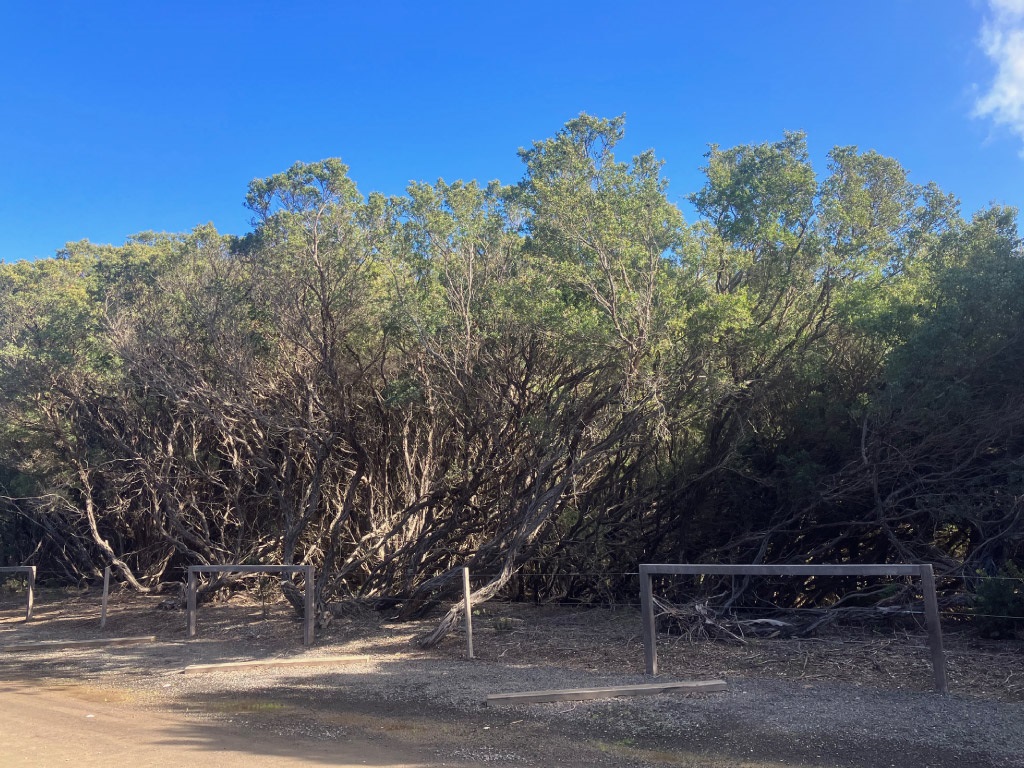
Image: Surf Coast Nature Search
Sallow Wattle (Acacia longifolia var. longifolia) is highly invasive to the Surf Coast region. Sallow Wattle is a tall spreading plant that can reach 8m in height with bright yellow flowers that bloom in late winter-early spring. The leaves can be key in identifying against other similar species such as the Coast Wattle.
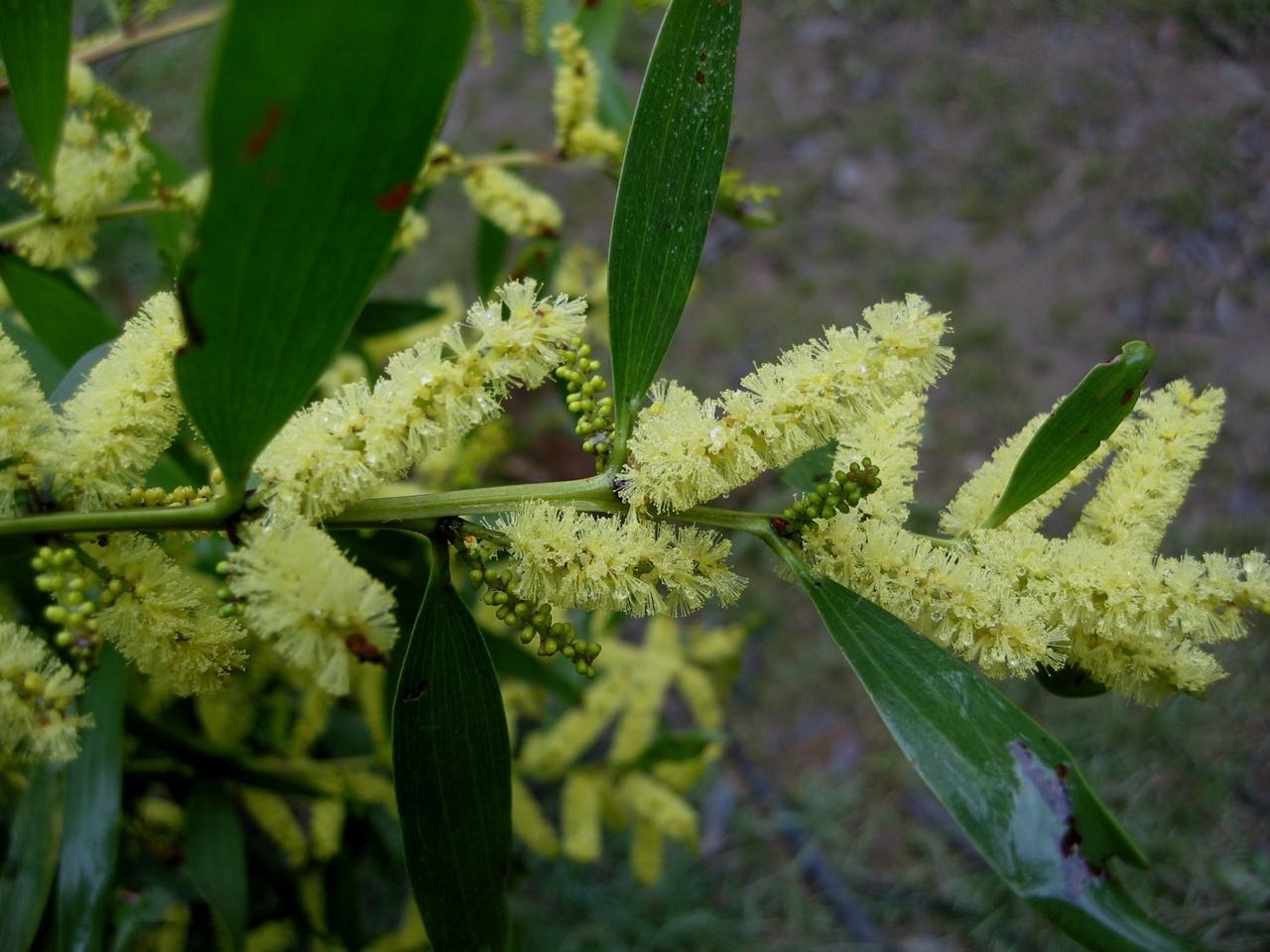
Image: Surf Coast Nature Search
Boneseed (Chrysanthemoides monilifera subsp. Monilifera) is easily distinguishable along the Jan Juc clifftops during Spring due to its bright yellow flowers.
Due to the hard work of our Conservation team, Education team and volunteer groups such as Jan Juc Coast action, this weed has been significantly controlled in the Jan Juc clifftops area with only isolated patches remaining. This is a great achievement and is in line with the Coastal Vegetation Strategy objectives for this species in the area.
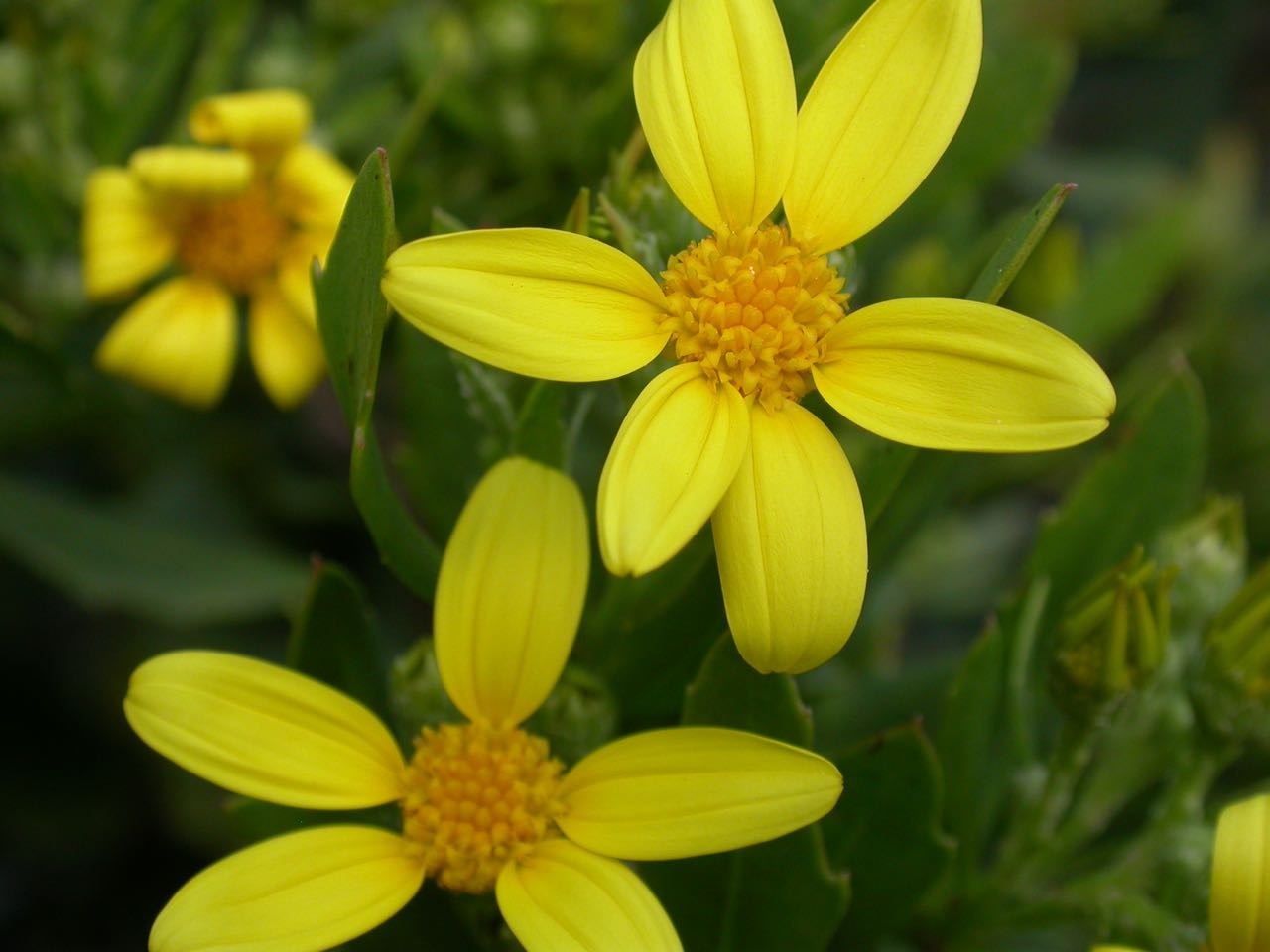
Image: Surf Coast Nature Search
Sweet Pittosporum (Pittosporum undulatum) has been commonly used as an ornamental tree due to its hardiness and ability to grow in a range of conditions. This species is highly invasive as the fruits are easily spread by birds which can have dramatic effects on the other indigenous species in the area.
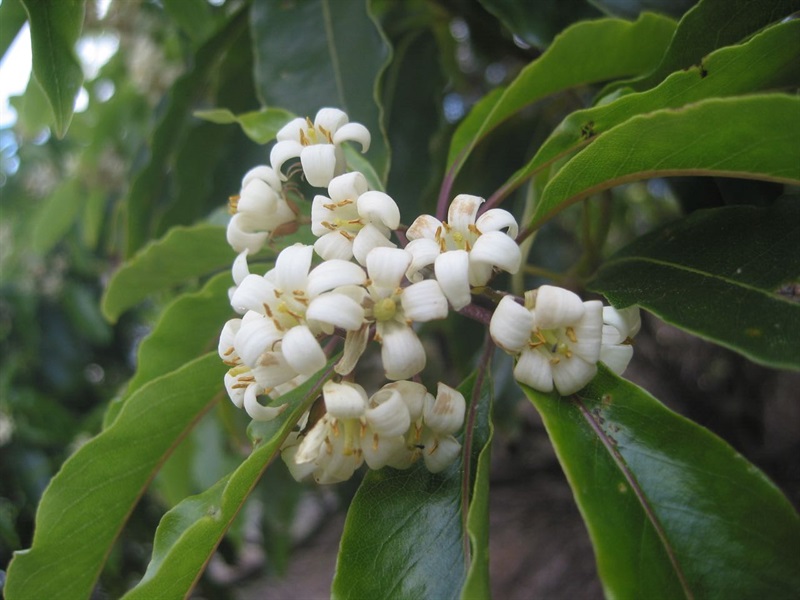
Image: Surf Coast Nature Search
Threatened species:
There are many threatened species along the coast, many which include orchids.
Merran’s Sun-orchid (Thelymitra merraniae) grows in heathlands, woodlands and often in other low-lying area. The species prefers well-drained sands as well as moist peaty soils. Merran’s Sun-orchid is known to grow both as a single plant or in small, scattered groups. It is listed as ‘Critically Endangered’ under the Flora and Fauna Guarantee Act. The aim for this species is to ensure that it can survive, flourish and retain its potential for evolutionary development in the wild.
However, not all orchids are native. Don’t get confused with the South African Orchid (Disa bracteata) which is an invasive non-native orchid. Read more about this invasive weed here South African Weed Orchid.
Significant species:
There are many significant flora species on our managed land. Please see below to learn more about these significant species:
Coast Wirilda (Acacia uncifolia) is endemic to our section of coastline as well as coastal areas of South Australia. This species prefers habitats such as coastal heathlands and shrublands. It is easily identifiable from its pale-yellow flowers.
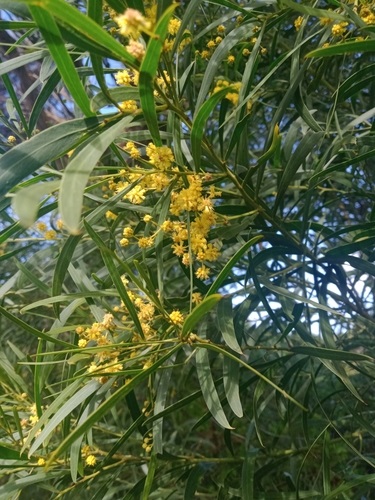
Image: Dan Rye / iNaturalist
Wrinkled Buttons (Leiocarpa gatesii) can be identified from its yellow button-like flower heads. This species is a slender perennial herb that grows to approx. 30cm tall with dark green leaves.
Wrinkled Buttons are endemic to the Anglesea – Lorne region and are threatened by weed invasion. The species is now listed as ‘Critically Endangered’ on the Flora and Fauna Guarantee Act.
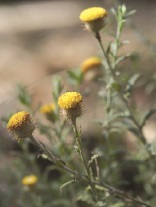
Image: Surf Coast Nature Search
Coast Bitter-bush (Adriana quadripartita) is a fast growing shrub found in the Surf Coast region as a single population at Point Impossible. This species grows in beach sandunes as part of the Ecological Vegetation Class ‘Calcarenite Dune Woodland’, a sub-community of Coastal Alkaline Scrub (EVC 858). Coast Bitter-bush consists of dark green leaves and flowers from July-February with male and female flowers on separate plants.
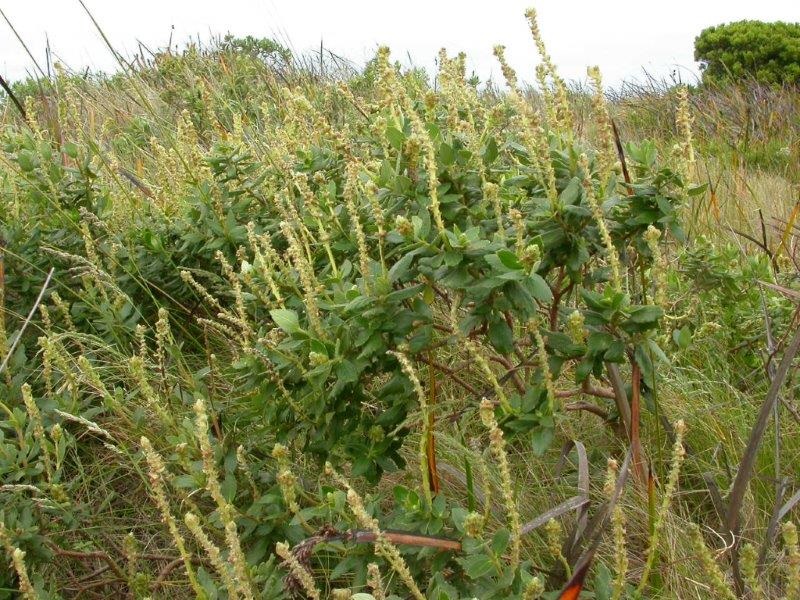
Image: Surf Coast Nature Search
Coast Twin-leaf (Zygophyllum billardierei) has a number of populations that exist in our coastal dunes even though the plant is somewhat uncommon across Victoria. A feature that makes this species easy to identify is the ‘Y’ shaped succulent leaves and the bright yellow flowers.
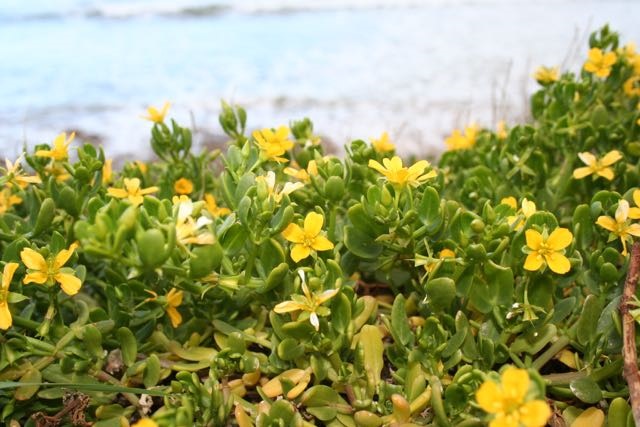
Image: Surf Coast Nature Search